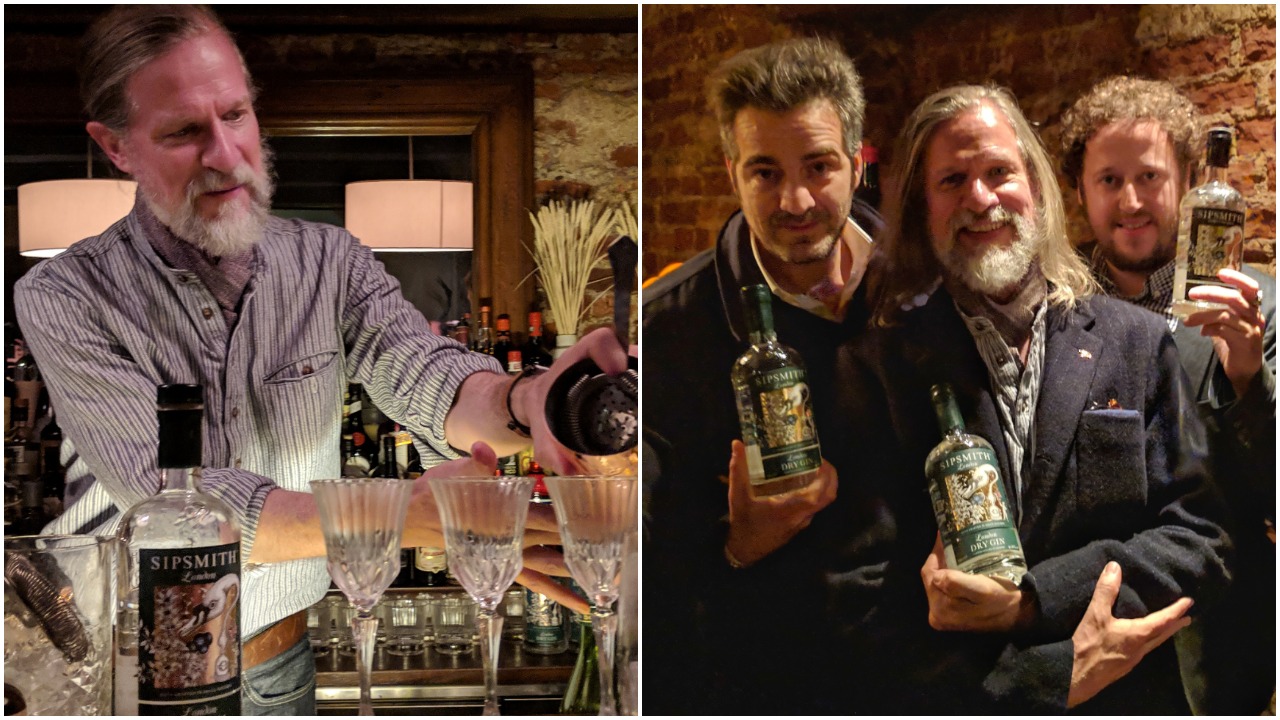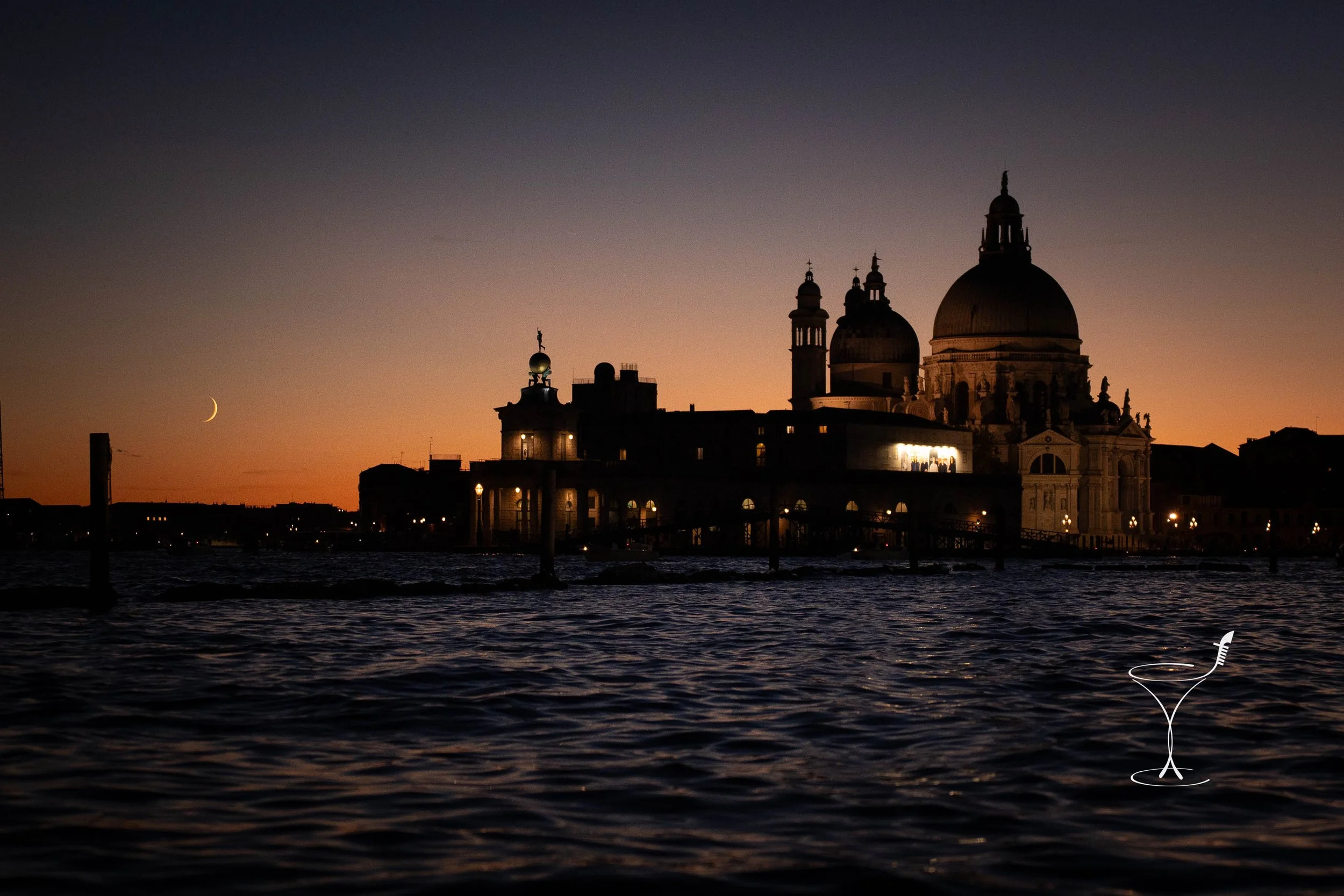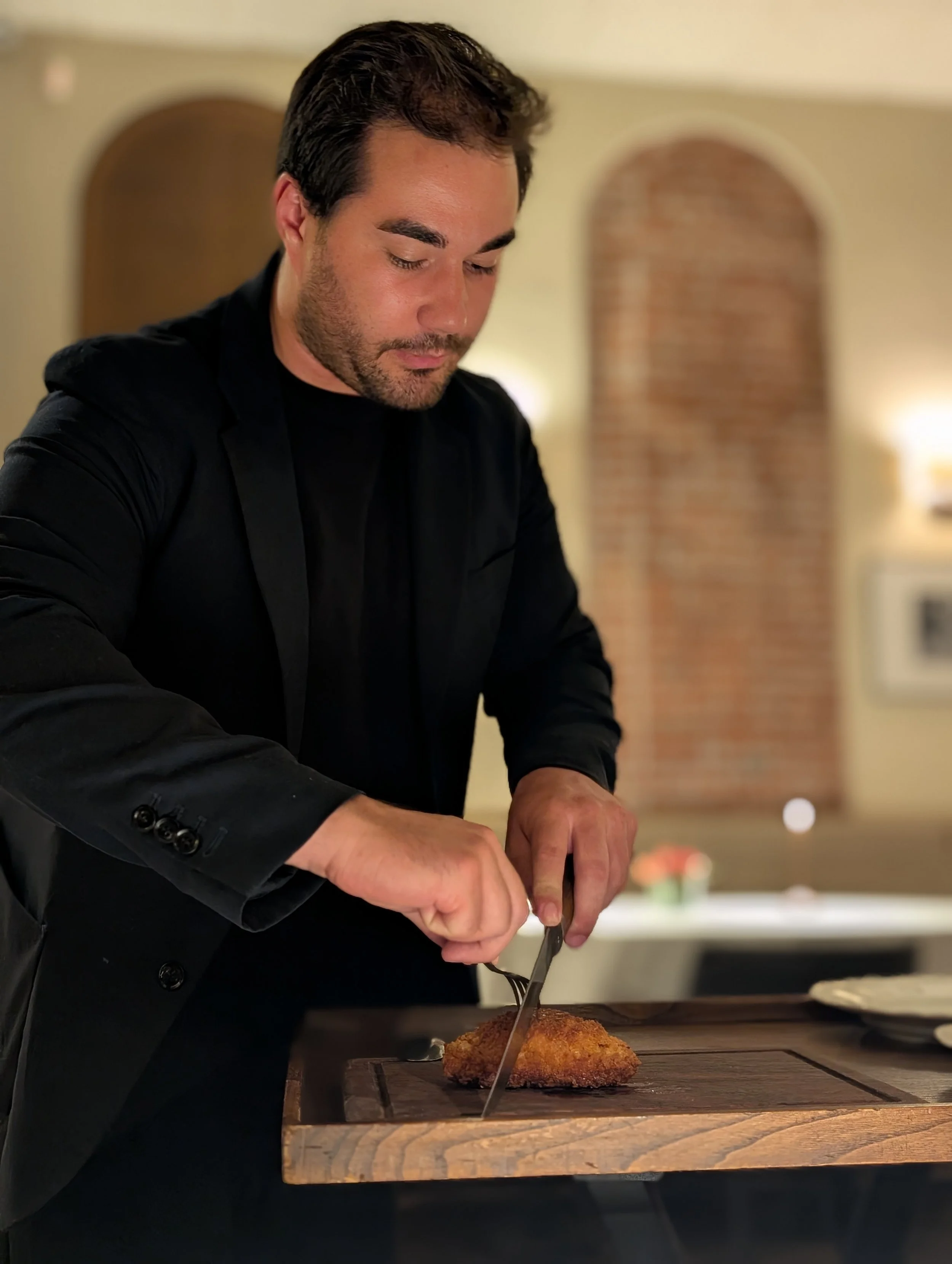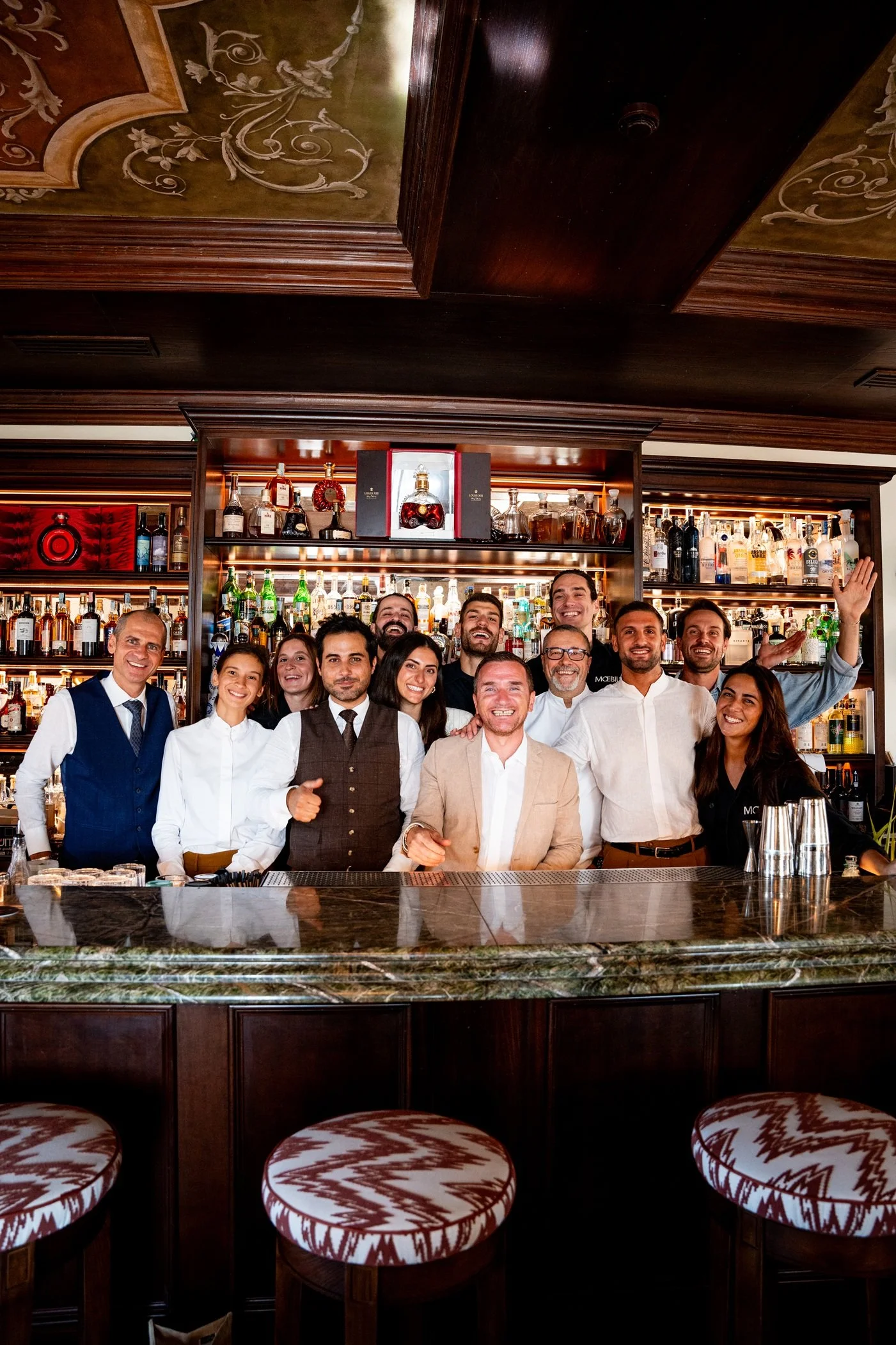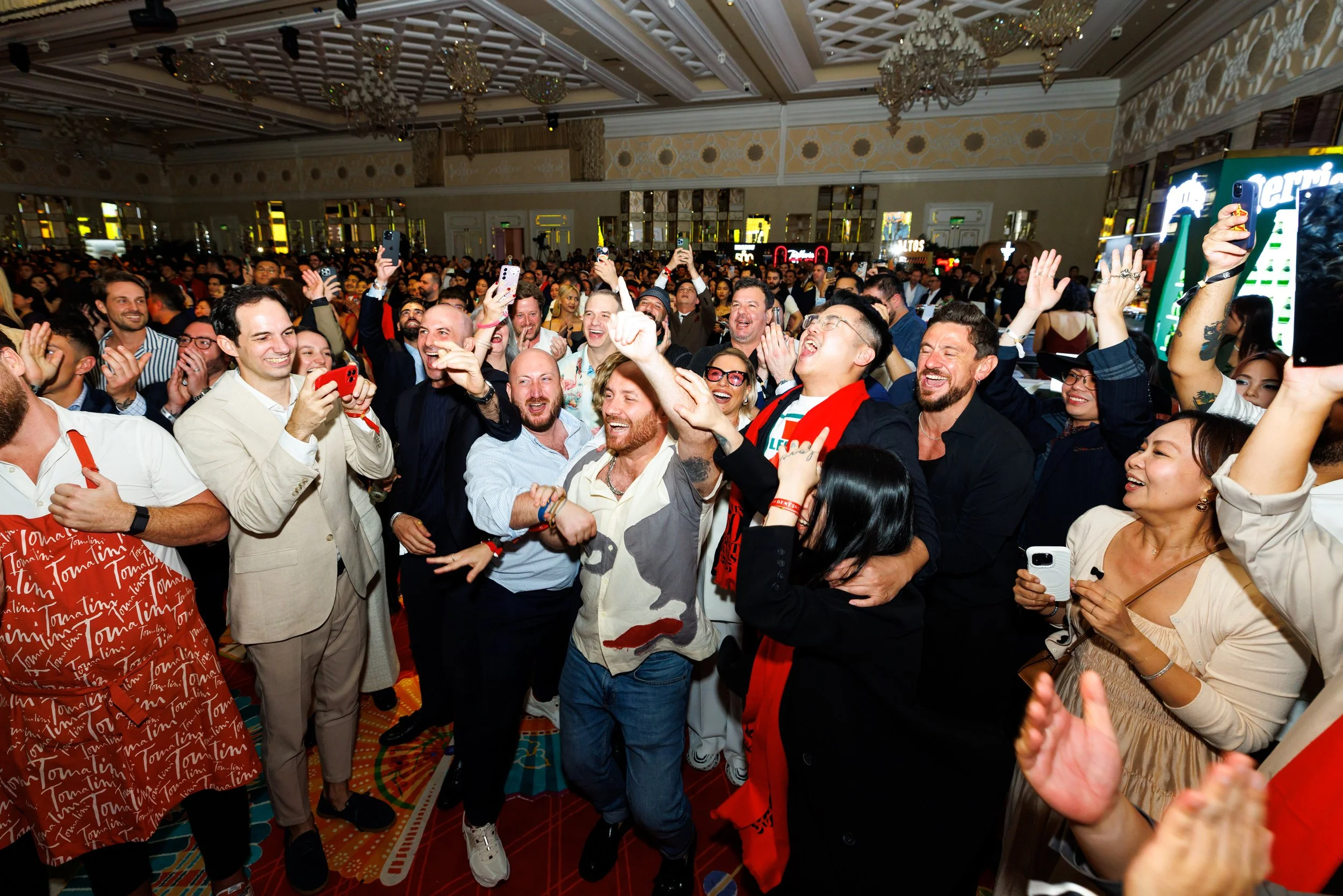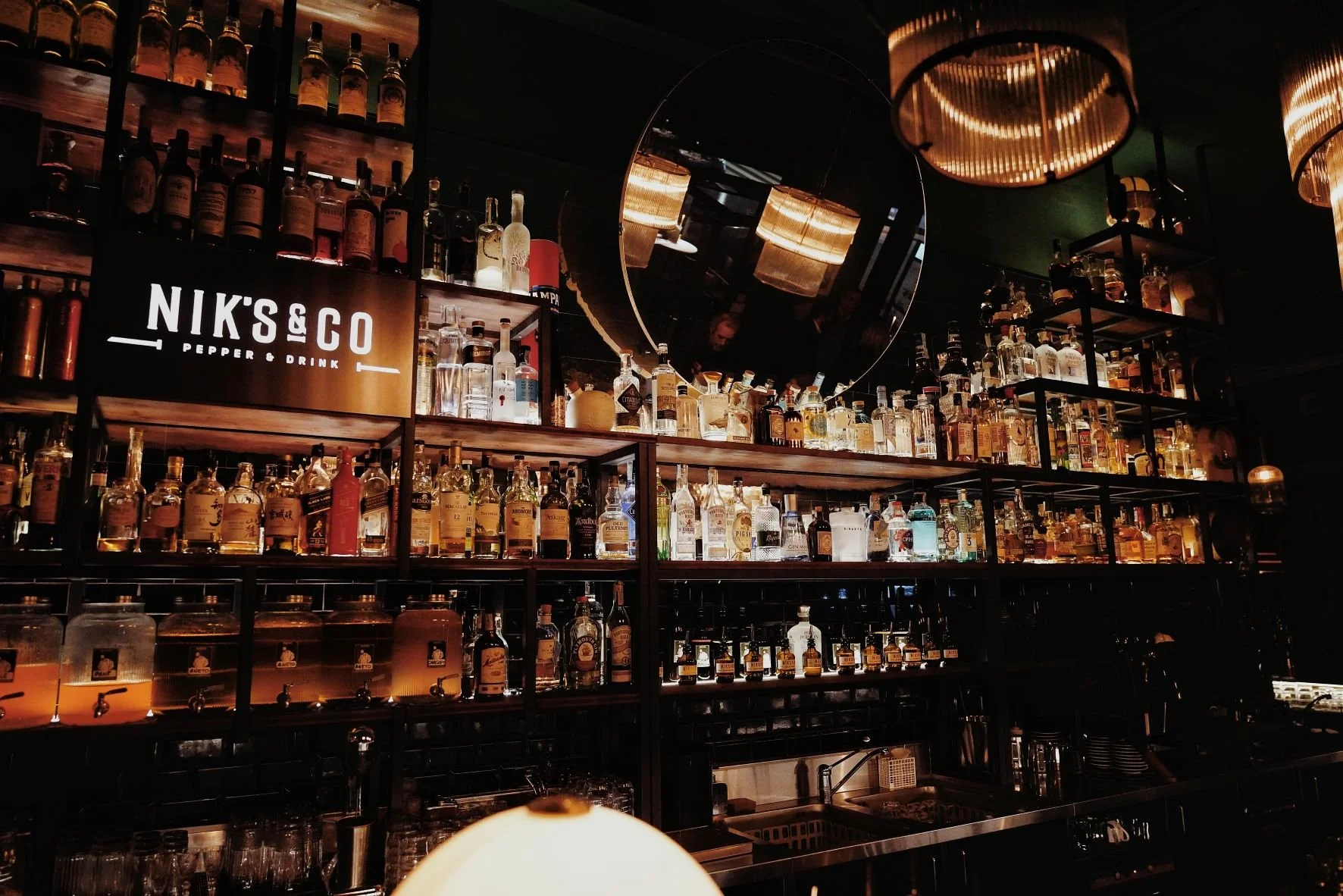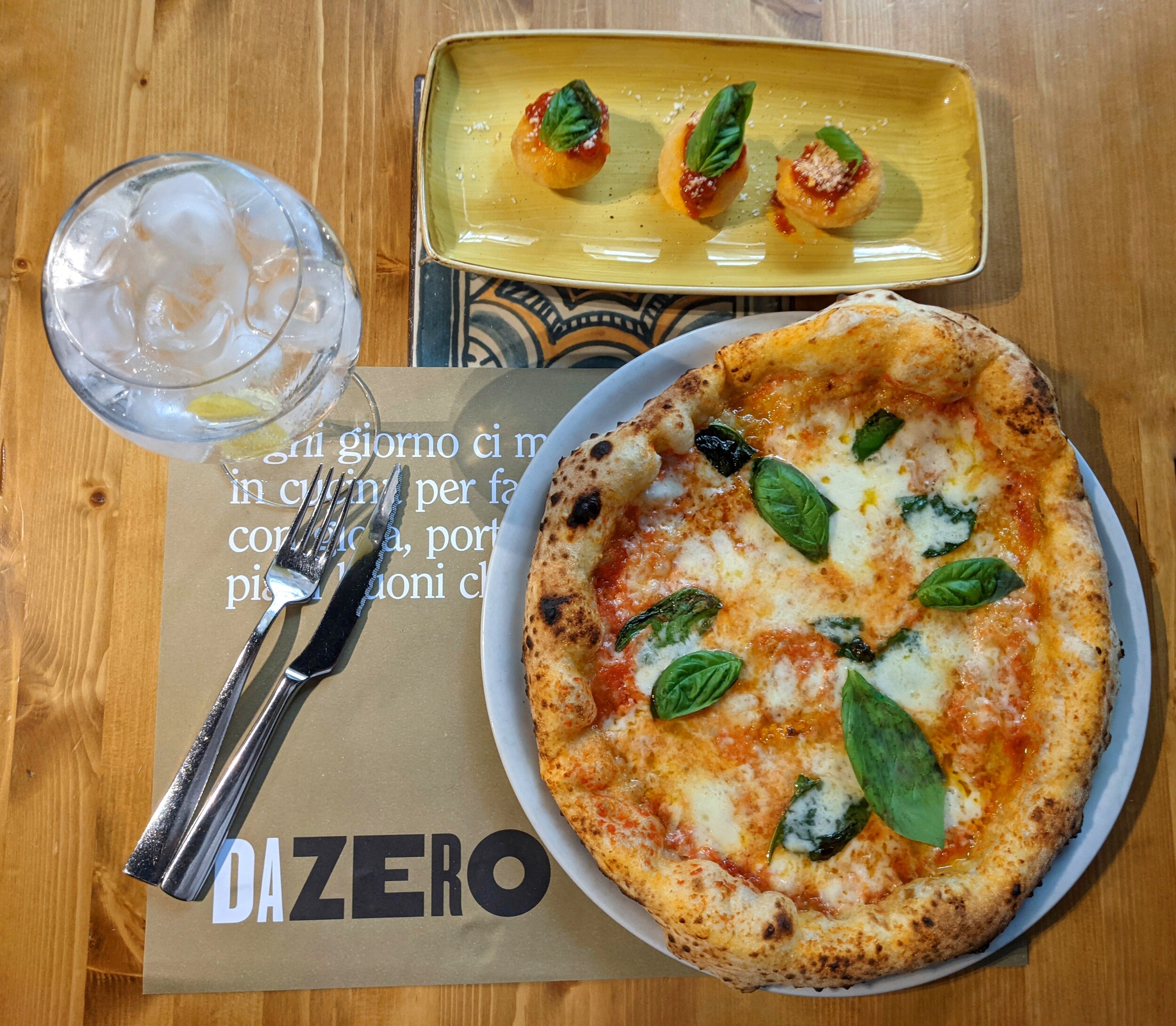This is My Martini
The martini. Elegant, clean, seductive but most of all, mystical. Today, there are thousands of variations of this cocktail and the origin of this classic is shrouded in mystery.
Some claim Professor Jerry Thomas invented the Martini. The 1887 edition of his Bartender’s Guide included the Martinez, the classic cocktail with gin, sweet vermouth, maraschino liqueur, Angostura bitters and lemon twist garnish. Thomas claimed to have made the drink for the first time at San Francisco’s Occidental Hotel. One problem: that edition of the Bartenders Guide was published two years after Thomas died.
Others believe the cocktail was born from branding. Some believe the drink derived from the famous “Martini & Rossi” vermouth, first created in the mid-1800s. Apparently in the interest of brevity, the “gin and Martini” drink of the time eventually became known as the “martini.”
The last popular theory is that the modern martini has its roots at New York’s Knickerbocker Hotel where in the early 1900s, Martini di Arma di Taggia was behind the stick. He served a concoction to regular John D. Rockefeller with London dry gin, Noilly Prat Vermouth, and orange bitters. It’s possible the martini as we know it today was named after this bartending legend.
Whatever the real origin of the martini, today this classic is a favorite of many bartenders, and increasingly so of everyday customers. The popularity of the drink is following a similar boom as the Old Fashioned trend from a few years back.
In 1922 the martini was most commonly made with London dry gin and dry vermouth are combined at a ratio of 2:1, stirred in a mixing glass with ice cubes, with optional bitters, then strained into a chilled cocktail glass. The garnish has always been the drinker's choice of a green olive or a twist of lemon peel.
Over the course of the 20th century, the martini became progressively drier, in part due to the availability of higher quality gin in the US after the end of prohibition. During the 1930s the ratio was 3:1 (gin to vermouth), and during the 1940s the ratio was 4:1. During the latter part of the 20th century, 6:1, 8:1, 12:1, 15:1 or even 50:1 Martinis became commonplace.
The traditional martini comes in an infinite number of variations. James Bond usually asked for his vodka martinis to be "shaken, not stirred", following the advice from Harry Craddock's The Savoy Cocktail Book (1930). Some even argue that the martini should be made by throwing, which tends to put more accent on the vermouth in the martini. A martini can even be served on the rocks in an Old Fashioned glass although I consider it personally to be sacrilege.
In our interview of Dario Comini for Drops Magazine, he had this to say about his favorite cocktail: “Both great technique and experience are needed to make a martini. Within a few seconds, you must correctly read your customer’s preferences. Then, you must artfully execute a martini well-suited to their palate. After all, we all have different tastes and ideas of what makes the perfect martini. Each martini is individual, unique, and impossible to repeat. As such, the variations of this classic cocktail are countless.“
It’s true that we all have our personal preferences for the martini cocktail. For me, it must be served bone dry and ice cold in a Nick and Nora glass. But I was curious, how do my bartender friends take their martini?
#thisismymartini
Jared Brown, Mixellany
We started by interviewing Jared Brown, who was in Milano recently for a Sipsmith master class at PRIMA comfort food and bar.
“My martini? There is no short answer. Such simplicity requires many words.
Selecting a particular balance of ingredients is highly subjective, shaped by both internal and external forces. Not only has my preference changed over time, it changes with each hour of the day. A lunch martini differs greatly from a cocktail hour martini. An evening martini is yet again unique.
That said, the framework for my ultimate martini—evolved over the decades since Anistatia and I wrote Shaken Not Stirred©: A Celebration of the Martini—is simple. Simple because I truly believe the words of Antoine de St. Exupery: “Perfection is achieved, not when there is nothing more to add, but when there is nothing left to take away."
Gone are the orange bitters and drop of absinthe and olive and twist submerged in the liquid. I prefer a clean style that rose in popularity in the 1950s.
For the ingredients, I worked very hard as part of a great team to produce the finest possible London Dry Gin, made in London without compromise on a copper pot still and balanced to my palate. But a classic dry martini is not straight gin. It also requires vermouth. There are many wonderful choices these days, but I am at heart a traditionalist and, like the legendary Sasha Petraske of Milk and Honey speakeasy fame, I prefer classic Italian dry vermouth. I prefer it to be as fresh as possible, so at home I keep dozens of mini bottles and open a fresh one for every round.
I combine these two ingredients, the gin and dry vermouth in an ice-filled tin. I would rather throw than shake or stir as throwing imparts fine aeration that remains in suspension much longer than the large bubbles in a shaken drink. These bubbles brighten the flavour and round out the mouthfeel without clouding the drink.
How many times you throw is dictated by the quality of the ice. Good ice takes longer, while bad ice will be very quick to chill and dilute the drink. There is no need to count throws. Watch the strainer handle shift as the ice melts. I find when it has moved about 45°, the drink has taken on the approximately 25% dilution I consider optimal for softening it and opening up the flavours.
The twist is the moment where I find some of the greatest bartenders trip up. Running the twist around the rim and down the stem before dropping it into the drink is riveting theatre, but it detracts from the flavour of the drink. Why do bartenders continue to do this? It is because their predecessors did, and theirs before them, much like we as a species ate raw meat before we discovered fire (and later discovered restaurants and good chefs).
The twist should be large and fresh and squeezed over the drink, to impart sweet citrus and floral aromas. It should never come in contact with the glass or the liquid. If it does, it makes the drink bitter and sharp and less pleasant. After it has been squeezed, the twist should be discarded.
I also prefer my martinis small in a very, very cold glass. If the glasses are kept in the freezer, it should not be put on the bar until the drink has been mixed. If the glasses are on the shelf it should be filled with ice and water before the gin and vermouth bottles are opened.
This, then is my martini: fiery frost in a velvet cloak, part gin and part vermouth, part insight and part reminiscence, part serenity and part festivity.”
Dry Martini
50 ml Sipsmith London Dry Gin
15 ml dry vermouth
Combine ingredients in an ice-filled Boston tin. Cover with a julep strainer. Throw as necessary. Strain into a chilled cocktail glass. Squeeze a lemon twist over the drink and discard it. Serve immediately to be consumed, in the words of Harry Craddock, “while it is still laughing at you."""
Photo Clinton Cawood
Dario Comini, Nottingham Forest, Milano
When I asked Dario to serve me his Martini, it only took him half a second to come up with the answer: The Mondrian Martini, the signature cocktail of Nottingham Forest.
“The Mondrian Martini was born in May 2002 when I had the intuition to adapt the spherication technique of Ferran Adrià, which consists of the controlled gelification of a liquid which forms spheres when submerged in a bath. Although Adrià enclosed small quantities of fruit or vegetable juices in the alginate skin for his cooking preparations, the application of this technique to the world of alcohol was a big challenge. Alcohol, being a solvent, did not behave like the purees, piercing through the spheres in a few seconds when in the calcium bath.
My goal was to create stable spheres that behaved like those used in the kitchen, so I started experimenting. My first thought was to create a syrup composed of alginate and water that had already rested. In Adrià’s preparation, the alginate is introduced with a blender, which adds a lot of air, which must then disperse for the subsequent skin formation phase. Since the mixture inflates excessively, it does not allow the spheres to form. Therefore, I let the mixture rest for 24 hours or alternatively, use through vacuum extraction, which takes only seconds . This rapid premix preparation allows the customer to choose, even at that very moment, what they would like spherified in their cocktail.
However, the solvent issue remained – the higher the ABV, the less the time the sphere remained intact. I solved the problem by adding a precise dose of glucose to the syrup, which I call the "mother syrup”. The sugar created during the formation of the sphere stands between the liquor and alginate, creating an "airbag" that does not allow the alcohol to pierce the ball. I’ve since passed this know how to Fabbri, who has commercialized the premix.
With the problem of the fragility of the spheres solved, I could now focus on creating cocktails with various liquors trapped inside them. The Mondrian is the tribute to the king of cocktails, the Martini. Using the adapted spherification process, I create "molecules" of different colors: green from absinthe, dark brown from Pimm’s, red from Campari bitter, and yellow from vodka infused with saffron. The colors are in tribute to the Dutch painter Pier Mondrian, founder of the neo-plasticism, which inspired the name of my Martini.
The spheres do not interfere with the final taste of the martini, as the spheres remain intact inside the cocktail. I suggest a ratio of 5:1 gin:dry vermouth, served in a generous sized Martini coupe glass. A teaspoon is provided with the drink which allows you to taste them as you wish, letting the explode on your palate, as you sip on the dry Martini. A painting in a glass.”
Edoardo Nono, Rita, Milano
Edo Nono is a legend in the new Milano da Bere. I credit him with starting the revolution of milanese cocktail bars serving quality drinks and food in the early 2000s.
“Fixing Martinis is a simple gesture.
The more you make, the more it becomes totally natural. Wash your ice in the mixing glass, stir it and strain to discard water; chill your glasses.
It’s crucial to prepare your martini setup so that the final part of your ritual is something very easy and quick.
Spraying vermouth is a technique that I’ve used my entire career.
I don’t want too much to taste vermouth and I want to be sure that the quantity that I use is a standard according to the variety of gin (or vodka).
Noilly Prat is my only choice.
When the temperature is perfect it’s time to start.
I spray the vermouth a few times than I pour the gin in the mixing glass. I stir for ten to fifteen seconds then I let it rest for almost twenty seconds. If there’s plenty of ice in the mixing glass and you’ve strained off the excess water, the mixture does not become overly diluted and the temperature drops considerably.
Then it’s time to give a little extra stir and pour the drink in your martini glasses. I love the "Nick and Nora" martini glasses.
A lemon twist or at times an olive is my garnish of choice. I’m not a fan of the Gibson.
Martin Miller is a fantastic gin. Cinnamon gives it a super fresh aroma and cassia gives the spiciness at the end. Lots of citrus oils complete the profile.
My Martini is my go to drink when I want to drink something very fresh".
Antonio Rosato, Mandarin Oriental, Milano
Antonio Rosato is a talented young bartender at my favorite hotel bar in the country, the Mandarin Oriental Milano. He prefers Tanqueray 10, a small batch citrus-forward gin. Antonio likes his Martini bone dry and opts for the In and Out method to have the premium Tanqueray 10 gin be the protagonist.
“I start by filling the mixing glass 3/4 full with Hoshizaki ice and then add two sprays of Noilly Prat dry vermouth. I stir the small amount of vermouth on the ice for 10 seconds before discarding it with a strainer.
Then I add 100 mL of Tanqueray 10 to the vermouth-coated ice, stirring for 15 seconds. To finish off the martini, I cut a strip of lemon peel which I then twist over top of the glass to spray the aromatics into the drink. This adds even aroma more to my citrussy and dry Martini.”
Domenico Carella, Milano
Domenica Carella, European brand ambassador of Mancino and co-founder of Drops tells us about his interesting twist on the Martini cocktail.
“There is a time and of course a way to link what is a perfect aperitif
and meditation drink
So here we are: this is my martini
The 10's
If you know me you will know that I'm fond of a few things, two of
which are the Martini cocktail and Scotch whisky...
So take a nice Martini glass, chill it with the technique that you prefer.
Now take the mixing glass
Pour a generous amount of Mancino secco (30ml)
What ever you do, don't lose a drop of the vermouth! We need all of it
to give us a fully rounded martini.
Now 60 ml of Tanqueray ten
And for a exceptional hint of peat add a few spoons of Ardbeg 10
Stir it.
For my martini, the most important thing after the ingredients is the dilution,
I love to have it wet.
When you have the right temperature and the right dilution pour it
into your glass finishing with a nice and organic lemon peel that will
not go into the glass in the end.
Sip it.
Respect it.
Love it.
Enjoy. “
Simone Mina, Checchino dal 1887, Roma
Simone is the manager of Testaccio’s most historic restaurant Checchino dal 1887, famous for serving “quinto quarto“ Roman cuisine. Thanks to Simone, there is also an impressive cocktail menu at Checchino, with an entire section dedicated to the Martini. Simone is ambassador of Botran rum, so it’s not surprising, this fine rum ended up in Simo’s Martini.
”The idea for the drink was born from my love for rum in general and for white spirits. The pirate in me wanted to make a Martini with reminds you of sea and adventure, dirty but without relying on olive brine.
Thus, taking advantage of those natural olive scents of white rums from Martinique, in this case to my dear Botran Reserva Blanca, I have paired a HSE cuvée de l'an 2010 that compliments the savory and olive profile of the drink with a pleasant note of tropical fruit and with its 50% ABV might, helps the martini to stay pleasantly dry.
This is my way of understanding the poetry of Dry Martini, which me is the most anarchic cocktail that exists. It is in this perspective that my martini was crafted and has motivated my other martini experiments at Checchino dal 1887 which I love to call my Martini Olé”
Rumbullion
5cl Botran Reserva blanca
2cl HSE cuvée de l'an 2010
1,5cl Tio Pepe Sherry Fino
4 lacrime di sirena (saline solution)
Garnish with three olives not washed in brine placed in the glass before pouring the drink
Colored coupe glass
Interview of Ally Martin, global BA of Hendrick's
I met Ally Martin, Global Brand Ambassador of Hendrick’s gin at the event Chambers Of The Curious in Circolo Filologico Milanese. The highlight of the event was the series of “Chambers”, where partygoers were guided by a professor and his assistants, though experiences designed stimulate all the senses.
Professor vs Professor at Chambers of the Curious
The Chamber situations were unique, sometimes a bit awkward, but always fun. In one case, I was blindfolded and guided through an odd series of encounters, and in another, a friendly but insane professor was showed me how mind waves can be used to harness incredible energy in our surroundings. Most importantly for me, the experiences were paired with refreshing Hendrick’s cocktails prepared by the early 1900s style Apothecary Bar in the main lobby. My favorite drink was the iconic Hendrick’s and tonic with Hendrick’s gin, Fever tree Indian tonic water, and of course, a slice of cucumber! More on the cucumber later.
Hendrick’s and Tonic
After the event, we took a taxi over to 1930, the milanese speakeasy bar where you need a membership card to enter. I sat down with Ally to ask him a few questions about Hendrick’s, the industry, and life as a BA.
Like many bartenders, Ally started his career in bartending while at the University of Edinburgh. In the beginning, it was simply a way to earn a bit of extra beer money as a poor student. His first job as a glass washer was far from glamorous. He then transitioned to a job at the well-respected Tigerlily. Ally spent a few years there, falling in love with the hospitality aspect and drink making in general. He had caught the bartending bug! And that’s how a job meant to support his studies turned into a career. Ally eventually ended up at the iconic Bramble bar, a stalwart on the prestigious World’s 50 Best Bars list. After a stint at Bramble’s sister bar The Last Word, he opened the Talented Mr. Fox pop up with Matt Whiley. They ran the pop up bar for 9 months before opening the award-winning restaurant-bar Peg and Patriot. Matt Whiley was an important mentor to Ally, helping him gain a creative perspective in his drink making while learning the most beneficial high tech methods for cocktail preparation.
Ally’s big career break was winning the UK edition of Bacardi Legacy, which was a springboard for his career as a brand ambassador for Hendrick’s. Starting as the UK BA, Ally is now global brand ambassador of the important gin company. I was curious what life’s really like as a BA. I have many friends who are ambassadors for spirits companies and often complain about stress and strenuous travel schedules.
I was surprised to hear that Ally truly loved his job. His favorite part is mingling with people in different cultures and really immersing himself in the societies of the diverse countries he visits. He doesn’t want the typical cookie-cutter tourist experience when visiting a new country. He always asks to be put in touch with a local, so that he can experience the city’s vibe just as someone living in the city would – just like what was happening with me, sitting in my favorite Milanese speakeasy.
Gin is now a huge category in the spirits world – just look at ATLAS bar in Singapore which has a dramatic gin tower holding a staggering 1300 bottles of gin, the largest collection of its kind. How does Hendrick’s gin stand out from the pack?
First a back story on Hendrick’s, which is part of family owned company William Grant & Sons, founded in 1886. Hendrick’s gin however is a relatively new product for William Grant. Although the company is historically known for its whiskies, about 50 years ago it acquired two rare stills with the hope of producing a gin. One is a Bennett still, while the other is an ultra-rare Carter-head still. However, nobody was quite sure what to do with these precious stills. They sat in the warehouse for over 20 years, until Lesley Gracey arrived 1989. Lesley, Hendrick’s master distiller, spent ten years perfecting the gin recipe, exploiting both of the stills to create her gin. Hendrick’s gin finally launched in 1999 and is now one of the top selling brands in the world.
Ally explained that Hendrick’s unique flavor profile and bouquet is thanks to its unusual yet wonderful infusions of rose and cucumber, combined with the harmony of 11 distilled botanicals which are sourced from all over the globe. Leslie Gracey’s idea of the rose and cucumber came about because she wanted to make Hendrick’s uniquely British. The first things to come to her mind when thinking about Britain were rose gardens and cucumber sandwiches! The roses add a stunning floral note while the cucumbers add a pleasant freshness to Hendrick’s gin.
Marco Russo of 1930 Milano
Hendrick’s has become a bartender’s favorite in recent. 1930’s owner Marco Russo prepared some fantastic twists on classic gin cocktails to enjoy during our couple hour encounter in the intimate speakeasy. I was happy to see that Ally and I have similar tastes when it comes to gin cocktails, with the hangover cure the Corpse Reviver no. 2 and the dry Martini being among our favorites.
Ally loves the Martini because of its simplicity. Yet at the same time, he argues it’s one of the hardest cocktails to execute because everyone likes theirs in a specific way.
So the obvious question, how does Ally like his Martini cocktail? For him it must be 60 ml of Hendrick’s Gin with 5 ml of Dolin Dry Vermouth, stirred down over ice and garnished with a pickled onion.
Ally with Hendrick’s master distiller Lesley. Source Ally Martin Instagram.
Link to Italian version of interview on Zero.eu.


